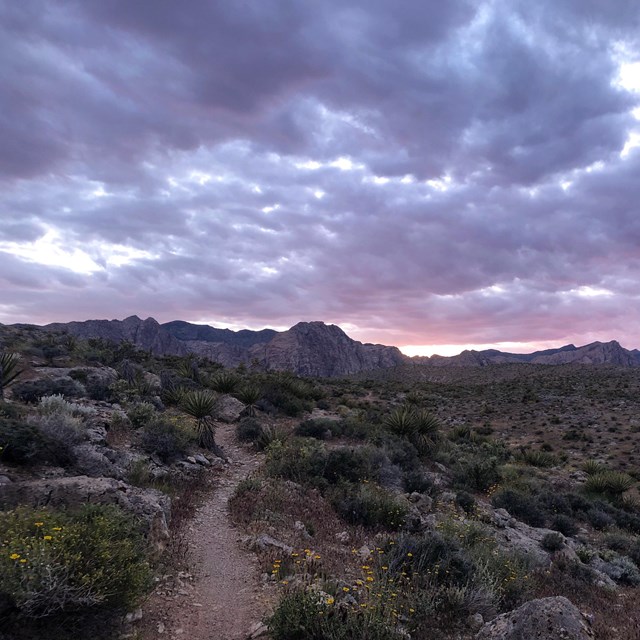Last updated: November 23, 2020
Article
Ute Raiding Along the Old Spanish Trail

Photo/U.S. National Archives and Records Administration
The Old Spanish Trail wound through rugged desert terrain to connect present-day New Mexico and California. Even though Mexico technically controlled the trail corridor, much of it was dominated by American Indians—particularly the Utes. Although hailing mostly from Utah and Colorado, Utes used their superior horsemanship and geographic knowledge to raid as far west as the Pacific Ocean.
Horses allowed Utes to exert power far beyond their traditional homelands. Bordered by the Navajos and Apaches to the south and Comanches and other Plains peoples to the north and east, Utes preyed on groups to the west that had not adapted horses on a large scale. By the late 1700s Utes were important economic parts of Spanish empire, trading slaves—mostly Southern Paiute women and children—to New Mexican workshops (obrajes) in exchange for horses. This relatively stable relationship enabled Spanish exploration into Ute territory along routes that would become part of the Old Spanish Trail.
When Mexico gained its independence from Spain in 1821, hopes were high for a way to connect Santa Fe and Los Angeles—two of the most important outposts on the young nation’s northern frontier. New Mexican merchant Antonio Armijo led the first commercial expedition on the Old Spanish Trail in 1829, establishing a general pattern: New Mexicans exchanged sheep, processed wool, and blankets for California’s abundant mules and horses. By the 1840s, thousands of animals passed along the Old Spanish Trail each year. Californians watched New Mexican caravans carefully, eventually establishing rules—passports, licenses, taxes—governing this burgeoning trade.
Perhaps they should have been more worried about Utes, who retained such power along the Old Spanish Trail that they demanded tribute from trading caravans crossing their lands. Mexico’s struggle to secure its northern frontier gave Utes access to other kinds of wealth, as well. Beginning in the 1830s, Utes used the Old Spanish Trail to steal massive amounts of horses and mules from California’s missions and ranchos. They often took them back to New Mexico to trade. Thus, livestock taken from the Pacific coast could end up traveling east along the Santa Fe Trail or south along El Camino Real de Tierra Adentro.
The Ute leader Walkara proved especially successful at raiding the San Gabriel and San Bernardino valleys east of Los Angeles. He was so successful, in fact, that he was often reported to be in multiple places at the same time. In 1840, Walkara led 150 raiders over Cajon and Tehachapi passes; they stole 3,000 horses from San Luis Obispo, San Juan Capistrano, and San Gabriel, following trails used by local Mojave and Yokuts peoples to avoid their pursuers. They traded many of these horses in Santa Fe. Like earlier Utes, Walkara also participated in capturing and selling Southern Paiutes.
In 1848, the present-day Southwest changed hands yet again. Other routes to California gained popularity and eventually volume of trade along the Old Spanish Trail declined. Mormons poured into Utah in the late 1840s, building fences, establishing large settlements, and attempting to change Ute behavior—especially their participation in the livestock and slave trade. Walkara died in 1855, before a series of treaties with the United States forced the Utes onto increasingly smaller parcels of land.
---
Ned Blackhawk, Violence Over the Land: Indians and Empires in the Early American West (Cambridge, Mass.: Harvard University Press, 2008), 58, 74, 119-120, 137, 183.
Tina Kelley and Kathryn L. MacKay, “Wakara,” Utah History Encyclopedia, https://www.uen.org/utah_history_encyclopedia/w/WAKARA.shtml (accessed 30 January 2020).
Natale Zappia, “Indigenous Borderlands: Livestock, Captivity, and Power in the Far West,” Pacific Historical Review 81, no. 2 (May 2012): 196-203.


